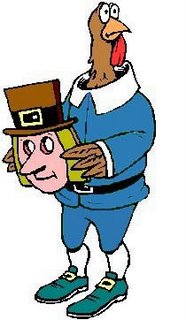
HOW TO FRY TURKEYS
1# So What Makes Us Experts
We’re not sure who invented frying turkeys, but would be willing to guess it was a Cajun. Our family has been frying turkeys for no less than twenty years. We’ve fried literally hundreds of them,and like good chubby Cajuns everywhere, when we are not frying turkeys, we are often standing around discussing possible techniques, innovations or improvements to the art of turkey frying. Over the years our turkey frying techniques have evolved to what we consider today to be a simple easy goof-proof, relatively safe technique to produce a tasty turkey.
Selecting Your Turkey
When selecting a turkey for frying, it is highly recommend you keep in mind, that smaller is better. It’s much better to fry two 12 lb turkeys than 1 20+ lb bird. The smaller birds are much less particular about their frying temperature, and much less apt to burn on the outside before being done on the inside. We recommend t hat you fry a bird from 12-16 lbs.
Preparing Your Turkey
Thaw out your bird at least 24 hours in advance. Remove him from the pkg...please don’t forget to remove the plastic or metal ‘thingys’ that hold the legs in place and the giblets from BOTH ends of the turkey. Drain and dry your turkey thoroughly, patting with paper towels to remove all moisture, inside and out. We recommend folding and tucking the wing-tips under.
Seasoning Your Turkey
When it comes to seasoning your turkey, there are literally hundreds of injection-style marinades on the market. Everything from exotic flavors, all the way down to a large variety of Cajun-style injections. Feel free to use the one of your choice, as a rule, they are all quite tasty. We make our own injection consisting of melted butter, onion and garlic juice and our own Cajun seasoning mix. We usually warm our injection mix in a small pot over low heat to infuse the spices evenly through the liquid, then cool before injecting. Large plastic injection syringes can be purchased at most any large grocery store or restaurant supply store and many of the store bought injection marinades come with the syringe included.
Most marinades come with a set of instructions. But if you plan on ‘winging’ it or improvising , here’s how we do it. We insert one full syringe at several different injections points on each side of the breast. We then use one full syringe per leg and thigh quarter. Then turn the bird breast side down and insert another full syringe on the back and wings, don’t forget to put a little in the wing tips.
Optional dry seasoning rub : We also rub the outside, inner body cavity of the turkey with our own dry Cajun seasoning, but there are several dry Cajun seasoning mixes commercially available. Use your favorite. Two of what we consider to be the better commercially available versions are Tony Chachere’s and Zatarains Cajun Seasoning. To apply the dry rub, we rub the turkey with softened butter, outside and inside both body cavities. And then rub in our dry seasoning mix, to taste.
*Note, some people recommend lifting the turkey skin from his breast and inserting the dry mix between the skin and the breast. If you choose to do this, be very careful not to tear the skin.
When your turkey is seasoned it should rest/marinate a minimum of six hours before frying, preferably overnight, in the fridge. This allows the seasoning to permeate evenly throughout the bird, giving a consistent flavor. We’ve seen turkey’s fried without enough marinating time that had strong pockets of spice next to bland meat. We can’t stress the importance enough of letting the spices marinate.
Frying the Turkey
CAUTION! This should not be done indoors! It's also strongly suggested that it not be done under any roof, as some inexperienced cookers using the wrong equipment, or putting a COLD turkey in hot oil, have set their porch roofs on fire.
Take your turkey out of the fridge several hours before cooking it to allow it to warm to room temp before frying. Trust us! You do not want to put a near frozen bird in a pot of hot oil!!!
Heat your oil, monitoring the temp closely with a cooking thermometer to 350 degrees F. Ease your turkey VERY slowly into the hot oil. Maintain a cooking temp of 325 degrees. It’s very important that the temp of the oil does not go below 300 degrees for any length of time! If it stays below 300 for any length of time, it will cause the turkey to absorb some oil, making it greasy tasting.
When it comes to cooking time, a good rule of thumb is to fry your bird for three minutes a pound. You can check by inserting a meat thermometer into the thick part of the breast or thigh, being careful not to touch the bones. The thermometer should read 160 F. (Keep in mind it will go up a few degrees when the turkey is removed from the oil.) Let the turkey stand or rest a minimum of 15 minutes before carving. We hope you enjoy...let us know what you think.(More information and updates will follow, such as suggested equipment and safe frying techniques.) Cappy and Pegody
4 comments:
My dad fries turkeys and they are so good. YUM.
follows the granma slappin, tongue ticklin smell of fried turkey wafting on the air!
A pure little slice of heaven!
So true, anonymous...YUM!!! I sure hope God lets us have this stuff in Heaven.
Post a Comment